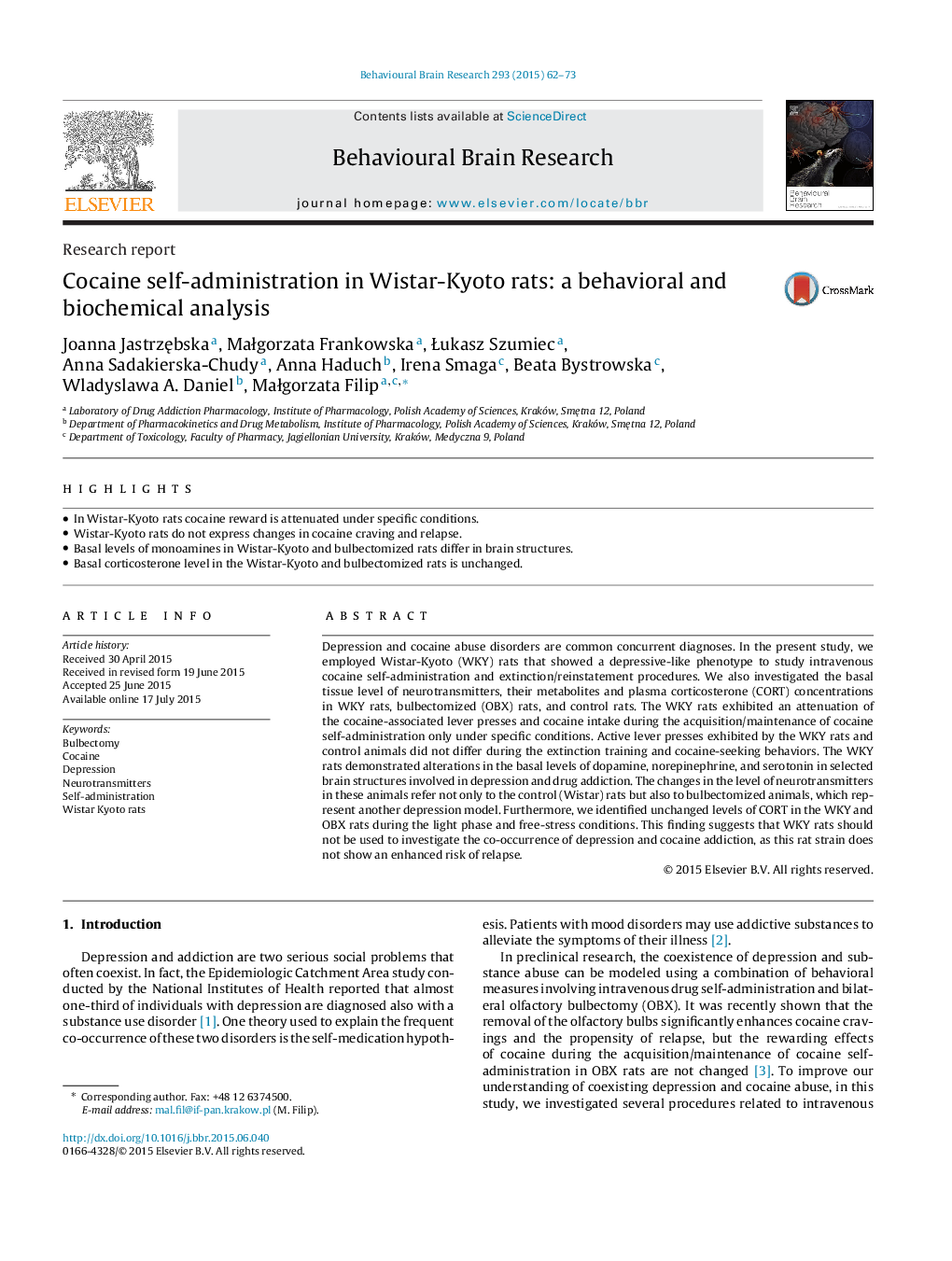| Article ID | Journal | Published Year | Pages | File Type |
|---|---|---|---|---|
| 6256593 | Behavioural Brain Research | 2015 | 12 Pages |
â¢In Wistar-Kyoto rats cocaine reward is attenuated under specific conditions.â¢Wistar-Kyoto rats do not express changes in cocaine craving and relapse.â¢Basal levels of monoamines in Wistar-Kyoto and bulbectomized rats differ in brain structures.â¢Basal corticosterone level in the Wistar-Kyoto and bulbectomized rats is unchanged.
Depression and cocaine abuse disorders are common concurrent diagnoses. In the present study, we employed Wistar-Kyoto (WKY) rats that showed a depressive-like phenotype to study intravenous cocaine self-administration and extinction/reinstatement procedures. We also investigated the basal tissue level of neurotransmitters, their metabolites and plasma corticosterone (CORT) concentrations in WKY rats, bulbectomized (OBX) rats, and control rats. The WKY rats exhibited an attenuation of the cocaine-associated lever presses and cocaine intake during the acquisition/maintenance of cocaine self-administration only under specific conditions. Active lever presses exhibited by the WKY rats and control animals did not differ during the extinction training and cocaine-seeking behaviors. The WKY rats demonstrated alterations in the basal levels of dopamine, norepinephrine, and serotonin in selected brain structures involved in depression and drug addiction. The changes in the level of neurotransmitters in these animals refer not only to the control (Wistar) rats but also to bulbectomized animals, which represent another depression model. Furthermore, we identified unchanged levels of CORT in the WKY and OBX rats during the light phase and free-stress conditions. This finding suggests that WKY rats should not be used to investigate the co-occurrence of depression and cocaine addiction, as this rat strain does not show an enhanced risk of relapse.
